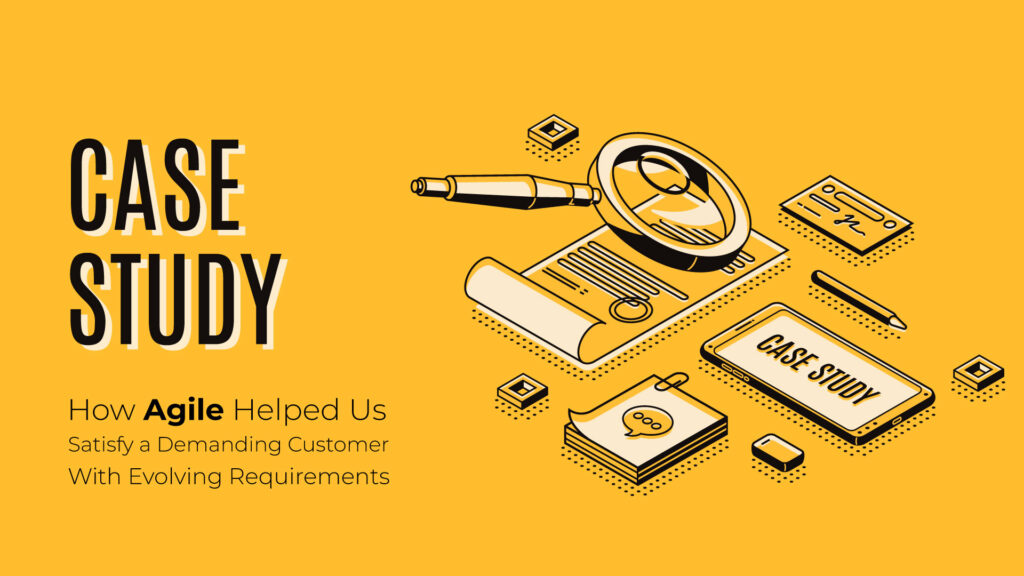Introduction
In software development, traditional project planning often fails when customer requirements are unclear or evolve over time. This case study explores how adopting an Agile approach enabled our team to satisfy a demanding client in France who needed a customized school management system, despite having an initially vague vision.
Through iterative delivery, continuous feedback, and flexible planning, we successfully delivered a product tailored to the client’s evolving needs—without unnecessary delays or scope paralysis.
Background
Our client, a private school owner in France, relied on multiple third-party software tools to manage different aspects of their school—such as admissions, attendance, finance, and communication. This setup led to:
- High subscription costs
- Data fragmentation across platforms
- Inefficient administrative workflows
The client approached us with a request to develop a unified custom software solution that would centralize all essential features into one system—with an affordable price point.
The Challenge : While the client was clear about wanting to consolidate tools, they did not have a fully defined feature set at the start. Their needs and expectations became clearer only as the project progressed.
Challenges
- Unclear Requirements: The customer only had a high-level idea of what they wanted.
- Evolving Scope: New feature requests were made mid-project based on user feedback.
- Demanding Feedback Cycles: The client was highly involved and requested changes frequently.
- Need for Fast Progress: The client expected regular tangible results to build trust and confidence.
Agile Solution Applied
To manage this uncertainty and build alignment, I, as the Project Manager ,proposed and implemented Agile methodology, specifically:
1. Rolling Wave Planning
We adopted an incremental planning model, where we started with clearly known features (e.g., user login, class scheduling), while leaving future features open for refinement.
Each sprint brought more clarity, and the backlog evolved continuously based on customer input.
2. Iterative Development with Regular Demos
We organized the work into short sprints (2 weeks each), with a working set of features delivered at the end of every cycle.
At each demo, the client could:
- Test features
- Suggest modifications
- Add new functionality they hadn’t initially considered
This continuous engagement created a shared sense of ownership and trust.
3. Flexible Backlog Management
We maintained a dynamic product backlog to accommodate new ideas while keeping scope manageable.
By prioritizing core features first and implementing enhancements later, we kept the software functional and testable from early stages.
Results
| Metric | Before Agile | After Agile Implementation |
|---|---|---|
| Feature Clarity | Vague and high-level | Well-defined through iterations |
| Time to First Working Module | N/A | 3 weeks |
| Customer Satisfaction | Low confidence | High engagement & satisfaction |
| Scope Management | Undefined | Controlled and prioritized |
| Cost Efficiency | Risk of overrun | Delivered within agreed scope & budget |
Key Deliverables Built:
- Student and staff management
- Attendance tracking
- Finance module (payments, invoicing)
- Timetable generator
- Parent-teacher communication hub
Key Takeaways
- Agile Works Best with Evolving Needs: When requirements are unclear, Agile allows scope to mature organically without delaying development.
- Customer Collaboration is a Strength: Constant feedback reduced the risk of misalignment and rework.
- Rolling Wave Planning is Practical: By focusing on what’s clear now and refining the rest later, the team stayed productive from day one.
- Frequent Delivery Builds Trust: Showing working software early kept the client confident and invested in the process.
Conclusion
By embracing Agile, we were able to turn an ambiguous vision into a functional, customized solution that met and exceeded our client’s expectations.
Without waiting for the entire scope to be defined upfront, we delivered a flexible, scalable school management system that unified essential tools—at a fraction of the cost of the client’s previous multi-software setup.
This project highlights the power of Agile in customer-centric product development: fast iterations, adaptive planning, and real collaboration lead to solutions that truly fit the client’s needs.



